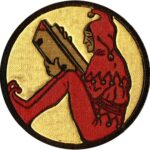
 “Moesia, mo’ problems.” – Emperor Valens.
“Moesia, mo’ problems.” – Emperor Valens.

 “Moesia, mo’ problems.” – Emperor Valens.
“Moesia, mo’ problems.” – Emperor Valens.

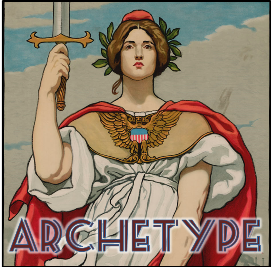 This is the first installment of my Writing Archetypes series, where I talk about roles, scenes, and plot points that can be found in many stories, synchronizing them with the narrative instincts of the human mind and imbuing them with a distinct psychological presence.
This is the first installment of my Writing Archetypes series, where I talk about roles, scenes, and plot points that can be found in many stories, synchronizing them with the narrative instincts of the human mind and imbuing them with a distinct psychological presence.
You don’t have to be a dyed-in-the-wool Jungian to recognize that archetypes are a core element in storytelling. You don’t even have to like the term “archetype.” Call them what you like: tropes, memes, patterns, threads, modes, models, Platonic forms, şurôt, whatever.
But, no matter what you call them or why they exist, they do exist, and they have undeniable storytelling power.
Let’s start with an easy one. Let’s start with the central one. Let’s start with the Hero.
_
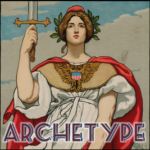
 You don’t have to be a dyed-in-the-wool Jungian to recognize that archetypes are a core element in storytelling, whether they come from some deep-rooted collective unconscious or are merely persistent cultural constructs.
You don’t have to be a dyed-in-the-wool Jungian to recognize that archetypes are a core element in storytelling, whether they come from some deep-rooted collective unconscious or are merely persistent cultural constructs.
You don’t even have to like the term “archetype.” Call them what you like: tropes, memes, patterns, threads, modes, models, Platonic forms, şurôt, whatever.
But, no matter what you call them or why they exist, they do exist, and they have undeniable storytelling power.

 The Breakfast Club, alternative ending:
The Breakfast Club, alternative ending:
They’re all Ally Sheedy’s multiple personalities.
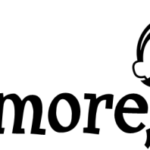

Get this: An awful pitch for a TV show based on a joke about the screenwriter’s hometown becomes a winner after she learns to love where she came from.
What is it? A film about a television screenwriter who is very negative about her (or his) childhood in Baltimore, Maryland. She pitches a medical comedy called Baltimore, MD about a doctor with the last name Baltimore but who does not actually live in Baltimore. While struggling with producers about the limitations of the gag, she is forced to return to Baltimore on family business, where she rekindles an affection for the city and eventually reworks the series concept around her hometown.
Working title: Baltimore, MD … of course.

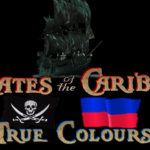
 You may have seen the first two episodes of this experiment in the bare bones of storytelling, The Eye of the Wind and Cat o’ Nine Tails. If not, you should check out the final version on their new page, here.
You may have seen the first two episodes of this experiment in the bare bones of storytelling, The Eye of the Wind and Cat o’ Nine Tails. If not, you should check out the final version on their new page, here.
The basic idea was to demonstrate how a few basic tent-poles of character (through dialogue), setting (through imagery), theme, and plot can convey the power of a story, over which the remaining cloth can be draped later.
As it turned out, the exercise is also a good example of how to incorporate the eight-sequence method, Brian McDonald’s “invisible ink,” and elements of Blake Snyder’s beat sheet to keep a story arc on track. Once you have this framework in place, it’s much easier to work out the filler scenes—which shouldn’t be thought of as “filler” material at all! These scenes should support, accentuate, and harmonize with the tent-pole material the way the rhythm guitar provides background chords for the lead guitar’s riff.
Tent-poles without tent-cloth are naked and useless. The “filler” is what makes a pillow more than just a weird, double-ply rectangle of cloth. What you put between the key points in your story arc matters!
If you’ve read the first two episodes, you can probably guess what sorts of filler scenes this hypothetical Pirates trilogy would need. They’d probably involve a little more attention to Cardinal Baldassaro and Captain Jules, although (as you may notice) the Cardinal exists primarily as a “lesser of two evils” throw-away villain to create contrast for the growing threat of Anne Bonny. Captain Jules, as you’ll see in this final episode, offers the “saver romance” required in any film featuring an element of romantic rivalry or conflict. Romcom fans know what I mean, and so will you when you read the tent-pole sketch for True Colours.

 On the eve of NaNoWriMo, the 50k novel-writing marathon, it might be a good time to talk word count.
On the eve of NaNoWriMo, the 50k novel-writing marathon, it might be a good time to talk word count.
Now, those familiar with this website know that I have a lot of gripes about this stuntfest. However, I’m not here to pick on NaNo this time, but defend it, because one complaint lodged against NaNoWriMo is incredibly unfair: the idea that 50k isn’t enough for a novel.
It’s ironic, actually, considering that NaNoWriMo is all about a monthly word count, daily word counts, and various accounting strategies for busting out the “winning” 50,000 words by St. Andrew’s Day. But my argument that the annual stuntfest misses the point of writing by fetishizing word count applies equally to NaNoWriMo’s critics who preach a weird dogma that 50k doesn’t qualify as novel-length.
In fact, specific to science fiction and fantasy, there is a widely held belief that 50k isn’t even half enough for a novel, November-written or not.
As this Writer’s Digest piece (amusingly billed as “The Definitive Post” on word count) asserts: “Science fiction and fantasy are the big exceptions because these categories tend to run long. It has to do with all the descriptions and world-building in the writing. With these genres, I would say 100,000 – 115,000 is an excellent range.” Even among non-sf novels, The Definitive Post claims that below 70k is “too short.”
I call double bullshit on that. Continue reading

 Get this: Antiques Roadshow meets Ghostbusters
Get this: Antiques Roadshow meets Ghostbusters
What is it? A buddy comedy about a regional television show on which viewers present heirlooms to get psychic readings. One of the two leads believes in the spirit world but the other is just a cynical showman and a skeptic. Everything goes haywire when a fan brings on an ancient statuette that gives the skeptic actual spirit-reading powers, and they only learn after the broadcast that the artifact is being sought by an evil Illuminati cult. Can they find (and save!) their fan and stop the cult?
Working title: Vintage Spirits
Tagline: “Some things are better left in the attic.”

 When I began the “experiment in the bare bones of storytelling” that spawned the notional Pirates of the Caribbean sequel trilogy, I expected the second and third installments to be cursory follow-ups to the first episode, The Eye of the Wind.
When I began the “experiment in the bare bones of storytelling” that spawned the notional Pirates of the Caribbean sequel trilogy, I expected the second and third installments to be cursory follow-ups to the first episode, The Eye of the Wind.
But, as I fleshed out Cat o’ Nine Tails and True Colours, I realized that even these tent-pole sketches merited closer treatment. Eventually, I decided to move the sketches themselves to pages, so they would be accessible from the face of the website. The main page is here.
Now, you can find them in the menus above, under Fiction. The final installment will be posted soon!
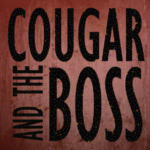
 Get this: A double studio album with John Mellencamp and Bruce Springsteen.
Get this: A double studio album with John Mellencamp and Bruce Springsteen.
What is it? John remakes Bruce’s classic hits, and Bruce remakes John’s. Two working class heroes putting their own spin on each other’s best songs.
Working title: “Cougar and The Boss”
Cover art draft concept:
Check out this live taste of what it might sound like: Continue reading